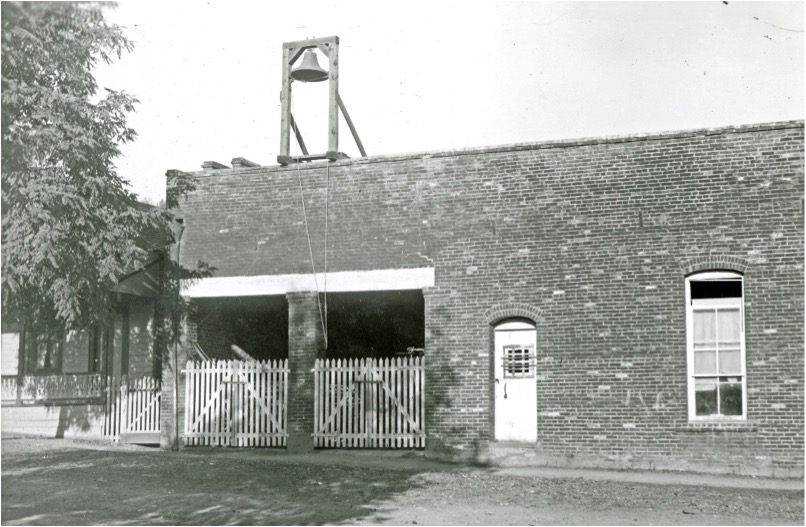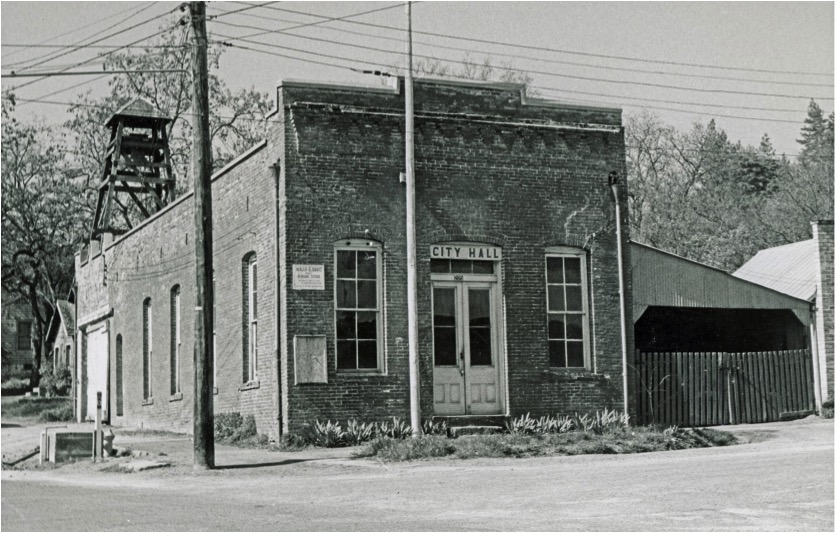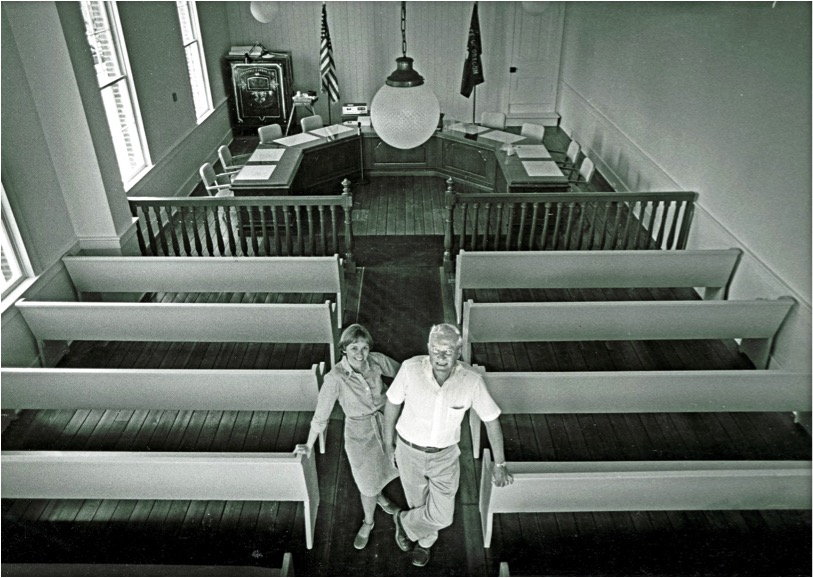|
A Virtual Walk Through Jacksonville History Stop 24: Old City Hall We don’t have far to go for our next stop, Jacksonville’s Old City Hall. It’s just across the street from the Brunner Building on the southwest side of West Main Street at the intersection that was once the heart of the town’s original business district.
Completed in 1881, this building has been used as a meeting place for City officials and town residents ever since and is the oldest government building in Oregon that has remained in continuous use.
Originally this free-standing structure was part of a row of pioneer wood frame buildings that extended the entire length of the West Main Street block. But let’s start at the beginning….
The corner of Oregon and Main streets was the site of the first brick store built in Jacksonville. It was completed in the spring of 1854 for Reuben F. Maury and Benjamin T. Davis, partners in one of the leading businesses in the up-and-coming town and known as merchants carrying one of the heaviest stocks of goods. Davis had acquired the bricks as part of a mortgage settlement with Horace and Abel Reed, the town’s first local brick makers. By 1856, Maury & Davis’s mercantile was being advertised in the Table Rock Sentinel as a “fire-proof building” on the corner of Main and Oregon streets. The partnership lasted through the 1850s until it became a casualty of the Civil War. Davis was a nephew of Jefferson Davis, President of the Confederate States of America. Davis supported the Confederate cause.
Maury was a graduate of the U.S. Military Academy at West Point and was the last commander of the Army’s District of Oregon. Over the next few years, the building passed through several hands until early 1868 when Morris Mensor purchased what a map showed as a “dilapidated structure” along with the street frontage. Mensor was another one of the town’s early Jewish merchants. He apparently renovated or rebuilt the original building since in August of that year the Jacksonville Reveille Weekly reported Mensor moving his general merchandise business from California Street to a “new brick building.”
A “black cloud” may have hung over Mensor since both his home and business establishments were involved in a number of fires over the years. According to the Oregon Sentinel, on October 24, 1874, only months after two disastrous fires had leveled half of Jacksonville, “citizens were again startled by the cry of fire and the ringing of bells [and it was] soon ascertained that [it was] the store of Morris Mensor, filled with an immense stock of general merchandise inside. The heavy brick walls and strong fireproof roof prevented the immediate bursting out of the flames…. The roof fell in [in] about two hours, and the flames from the burning mass within shot up above the walls to a height of forth to fifty feet.” However, Mensor was resilient, and by 1876 had relocated his “New York Store” across the street to the former Brunner Building (Stop23). What use, if any, was made of the burned-out building for the next few years is unknown. It appears to have sat vacant until 1880 when the Jacksonville Board of Trustees purchased “the old Mensor Store” for $450 to renovate for use as a town hall. When it was determined that the west wall was unsafe, the Board appointed a Building Committee of Nathaniel Langell and Christopher Ulrich to oversee construction of a new town hall on the site for “public assemblages of every nature as well as a place of meeting for the city’s fathers.” The city contracted with Peter Brevert for $125 to “take down the old walls” and clean out the cellar. The Building Committee apparently created the design, a vernacular version of the commercial Italianate style popular at the time. Building specifications seem to have replicated the frame office building the city had erected in 1861, designed to accommodate three functions—meeting room, jail, and firehouse.
David Linn, with a low bid of $1,995, was awarded the contract. Linn was a prominent Jacksonville builder and furniture maker and owned a planning mill. At various times he also served as a member of the City Board of Trustees, as Mayor of the town, and as Jackson County Treasurer. Linn was to complete everything but plastering by January 1, 1881 and furnish everything “except the brick lying on he ground.” Board of Trustee minutes imply that the Maury & David store cellar would be the building’s foundation and brick from the earlier store would be recycled into the new structure. Brick mason George Holt, who was constructing the U.S. Hotel at the same time, was hired to lay the brick work, manufacturing brick as needed. A one-year property tax levy was expected to raise $1,000 toward construction costs; other monies and “a small additional tax” in the following year were expected to pay for the building. Before the building was completed, Jacksonville residents circulated a petition to add a second story to the building, alleging that Madame Jeanne Holt, proprietress of the U.S. Hotel, intended to convert her meeting hall to hotel rooms “and thus destroy the only fit place for public gatherings in the town.” Madame Holt denied the allegations and Linn estimated that a second story for a public hall would add $2,400 to the building costs. The Trustees “did not feel authorized to incur such an additional outlay.” The final dimensions of the new building were reported as 23 feet fronting Main Street, 76 feet on Oregon Street, and “fourteen feet high from the foundation.” The main council room was 46 ½ feet long. A recorder’s office (little more than a closet) and a two-cell “calaboose” was behind the council room with a separate door from Oregon Street. At the rear was a two-bay storage area for the town’s hand-pump fire truck with wooden picket gates across each entrance.
In 1883, the President of the Board of Trustees was ordered to purchase a new “hand fire-engine, a hose reel, a fire bell, and sufficient hose.” A year later, local tinsmith and hardware merchant Jeremiah Nunan fashioned a two-post gallows design bell tower for the fire bell which was positioned above the truck house portion of the building. Apart from occasional painting of the exterior to preserve the soft local brick, a new bell tower in the 1920s, and widening of the truck bays to accommodate newer fire trucks, the building saw little change over the next 100 years. When electricity came to Jacksonville, the building was wired for new lighting. One cell of the “calaboose” was turned into a bathroom; the other continued to house local delinquents into the 1950s. When a new fire station was built at the corner of North 3rd and West C streets, the old fire house became a storage area. With a need for more space, City offices were relocated to the new fire station as well. Old City Hall continued to be the meeting site for the City Council, commissions, and committees, but there was no upkeep for what was once referred to as “one of the town’s handsomest ornaments.” Proposals were made to refurbish the structure in 1964 and again in 1974 but were not carried out. A “dilapidated structure” once again stood on this site.
Finally, beginning in 1979, with $14,000 from the City and a $29,000 grant from the U.S. Department of the Interior, the Jacksonville Boosters Club took the lead on the building’s restoration. The Boosters donated $15,000 to the project, funds they had raised by conducting historic home tours and selling license plates. With a year-and-a-half of sweat equity, rotten, peeling walls were rebuilt and replastered, flooring refinished, the roof and fire bell tower replaced, and exposed electrical conduits rerouted. Artists Anne and Bruce Butte restored the elaborate original scrollwork on the safe. The Jacksonville Garden Club spruced up the front with shrubs and a flagstone walk.
In 1881, Jacksonville citizens had proudly opened the doors on their new City Hall. One hundred years later, in June of 1981, Jacksonville residents gathered for a ribbon cutting ceremony to celebrate its restoration.
Sources Cited Gail E.H. Evans, Jacksonville Historical Survey, 1980. Richard H Engeman, “Construction of the Jacksonville City Hall, 1880-1881,” prepared for the City of Jacksonville and the Oregon State Historic Preservation Office, in connection with the renovation of the Jacksonville City Hall; June 1979. Marion Dean Ross & Christopher Owens, Historic American Buildings Survey, ca. 1975. “Old City Hall Returning to Glory,” Medford Mail Tribune¸ December 7, 1979. “Making the Old Like New,” Medford Mail Tribune¸ June 14, 1981. |

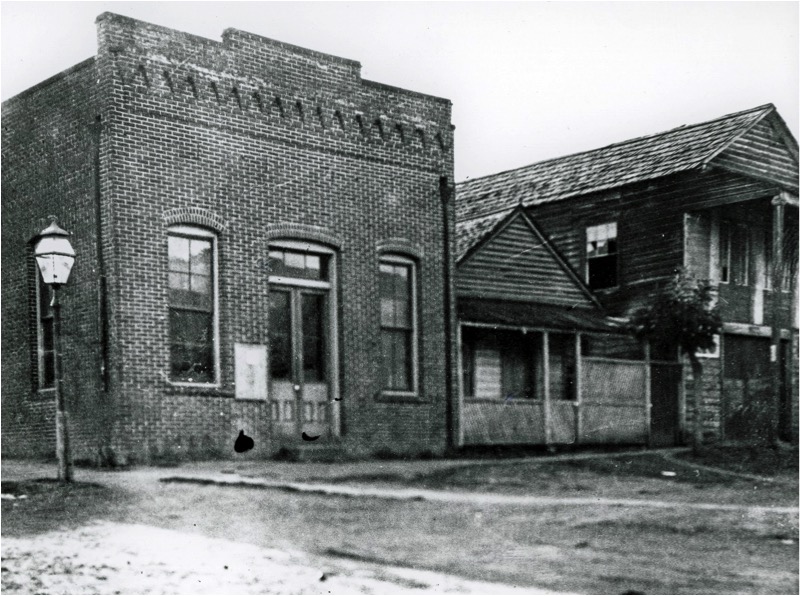
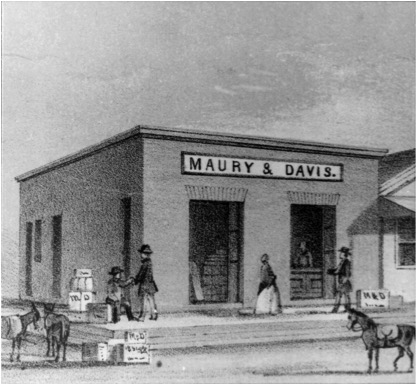
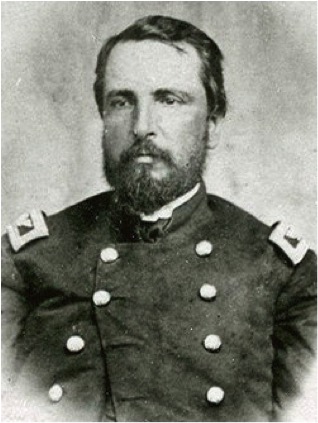
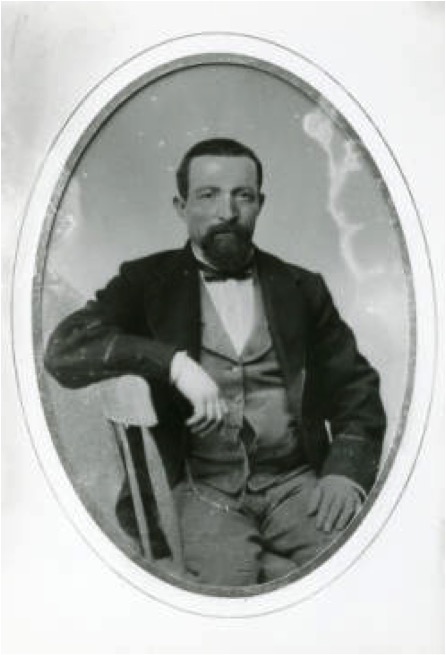 Morris Mensor. SOHS #363.
Morris Mensor. SOHS #363.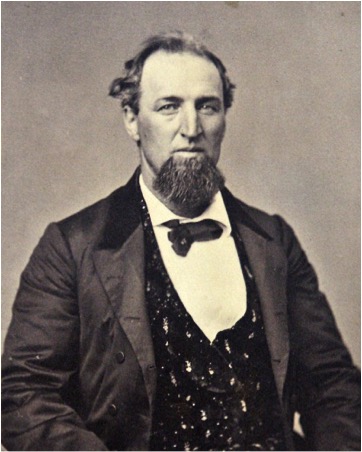 David Linn. SOHS# 10365
David Linn. SOHS# 10365